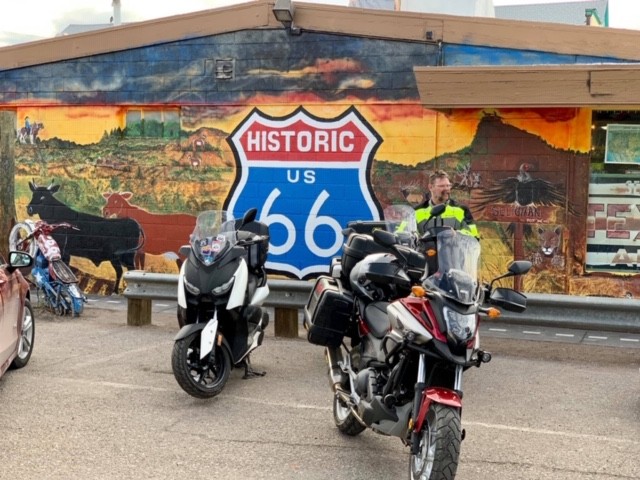Products You May Like
While surfing my Facebook feed recently, I saw that one of my high school friends was taking a motorcycle camping trip across the Western United States with some of his lifelong friends.
While I had lost touch with my friend Eric since we graduated, my jealousy quickly led to curiosity and I became eager to catch up with him about their adventure.
In our youth, Eric was the type of kid that shared my passion for the outdoors. He spent his summers canoeing at a camp upstate and when he returned home each fall, Eric would be full of epic stories of intense canoe trips and speak passionately about the lifelong bonds he made on the water. He would later go on to become a counselor at that very camp.
As a senior in high school, I was fortunate enough to experience one of those epic canoe trips myself. We traveled over 100 miles on the water over 10 days with only our canoes, tents and the food we carried with us.
When I caught up with Eric, he was taking a break from his trek with his friends somewhere along the Pacific Coast Highway on his way to Big Sur. This was after nearly two weeks into his Western US tour, which began on an Amtrak train from Cleveland to New Mexico. They were well into their motorcycle camping trip.
Once they arrived in New Mexico, they met their motorcycles, which they had shipped from Ohio. Their journey would take them along Historic Route 66 from New Mexico to Arizona where they spent time in Sedona and the Grand Canyon. They then traveled on to Joshua Tree, and ultimately into Northern California and their final destination: San Francisco. Along the way, they experienced beautiful scenery, encountered new people and were exposed to the elements.
Here are ten things that can help you if you’re planning an epic motorcycle camping trip of your own:
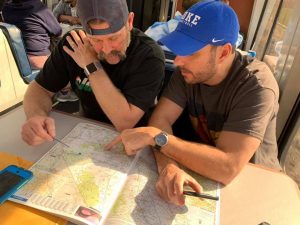 1. Chart Your Course Carefully
1. Chart Your Course Carefully
If you plan to ride a motorcycle on your journey, be sure to plan your route based on your riding ability. Eric and his friends weren’t all experienced riders, so they made a conscious decision to chart a course that kept them off the main roads and highways as much as possible. Backroads made the trip a bit longer, but they were able to focus on safety and enjoyed views that they would have otherwise missed.
2. Preparation is Critical
After you chart your course, be sure to plan where you are going to camp along the way. Since you will likely have spotty cell coverage in many areas, call in advance to reserve a campsite and make sure the campground is still in operation. Some campgrounds have seasonal hours and availability, and some national parks require permits in advance. (And a good note to remember: a warm shower always works wonders after a long day on the bike.)
If you plan to ship the bikes, select a central location to start your trip and be sure to use a reputable shipping company – and one that is insured.
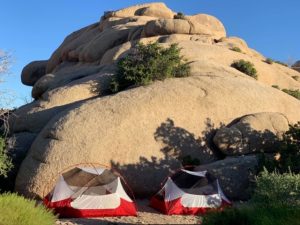 3. Pack Appropriate Clothing and Gear
3. Pack Appropriate Clothing and Gear
Long days on a bike across large geographic areas will result in a wide range of weather. Prepare for all elements: rain, sun, wind, heat. While Eric’s trip was in the spring, his group still encountered elements that required appropriate gear.
It’s always a good idea to prepare for the worst and hope for the best – and much better to remove layers than to not have them at all. This can absolutely make or break a motorcycle camping trip.
And a medical kit should be with you everywhere you go. You never know when you or one of your friends may need help.
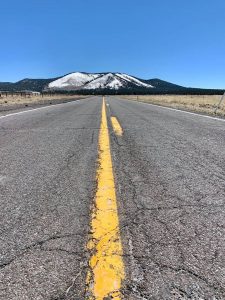 4. It’s About the Journey, Not Just the Destination
4. It’s About the Journey, Not Just the Destination
Along the way, make time to stop and talk to people, as well as to each other. Check out the local scenery, shops, and attractions where you can. Yes, you will encounter problems and unforeseen issues along the way – so try to remain flexible and enjoy the journey.
5. Do a Test Run Locally
Make sure your gear fits on your bike and that you can ride without impairing your balance or visibility. Take a few test rides and plan a local overnight trip to figure out the most efficient way to pack your gear.
6. Determine a Budget in Advance
It’s important to go in with a plan around how much you want to spend on bike rentals, transportation, gas, lodging, food, and gear. Borrowing gear (if needed) can help keep costs down. A trip like Eric’s can be done for less than $1500, with the right planning.
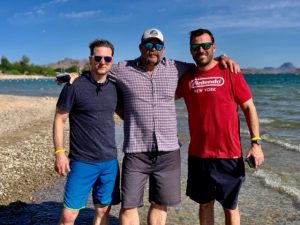 7. Go With the Right People
7. Go With the Right People
Expect long days, close quarters and fatigue. On top of that, add camping, hiking and possible nights of poor sleep. When mixed together, those elements can result in stress for any or all of you on the trip. If you need some time alone, make sure to find time for that.
Also, be sure to go with people who play to your strengths and help your weaknesses. If you’re not a strong motorcycle rider, make sure one or more of your friends are. Make sure one or more of you have experience camping as well as some basic mechanical skills if you run into issues with the motorcycle.
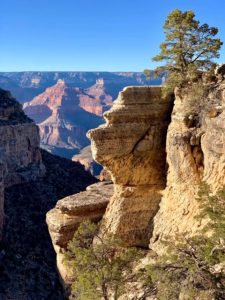 8. Journal Your Trip
8. Journal Your Trip
There’s a reason that man people talk about taking a long motorcycle trip – but never do. Trips like these require planning, money, time and supportive friends and family back home. Be sure to take lots of pictures and notes along the way. Hopefully, you get to encounter many things that you’ve never seen before (vegetation, people, towns, roads, scenery, rock formations). At some point down the road, you will look back on those notes and pictures and relive the trip all over. It’s also a great motivation to plan your next motorcycle camping trip.
9. Plan for Mechanical Issues
While motorcycles are built better than ever, you may still run into mechanical issues (such as flat tires or battery issues). In many cases, you may be in very remote areas when these issues occur, so be sure that you have filled up your tanks accordingly and that you have basic back up gear as needed.
10. Give Yourself a Buffer
You will see things along the way that weren’t in your original plan.
Enjoy the scenery.
Stop, smell the roses.
Talk to the locals.
From traffic to road closure to construction – you will surely run into delays that you hadn’t planned for, so having a buffer of time and the right mindset will allow you to embrace change, be flexible and enjoy the ride.
